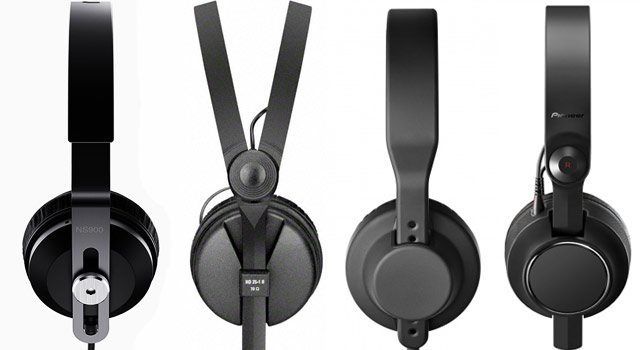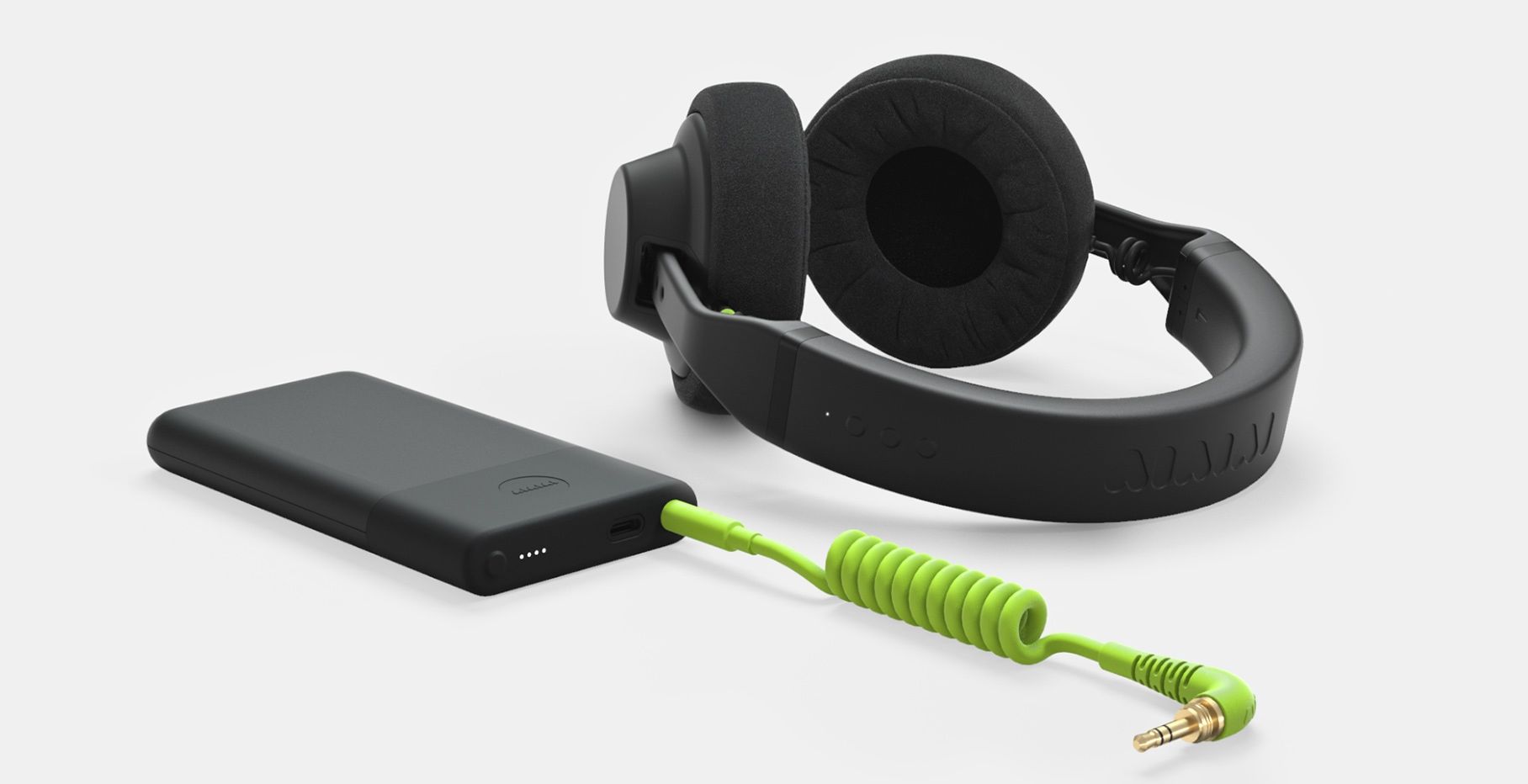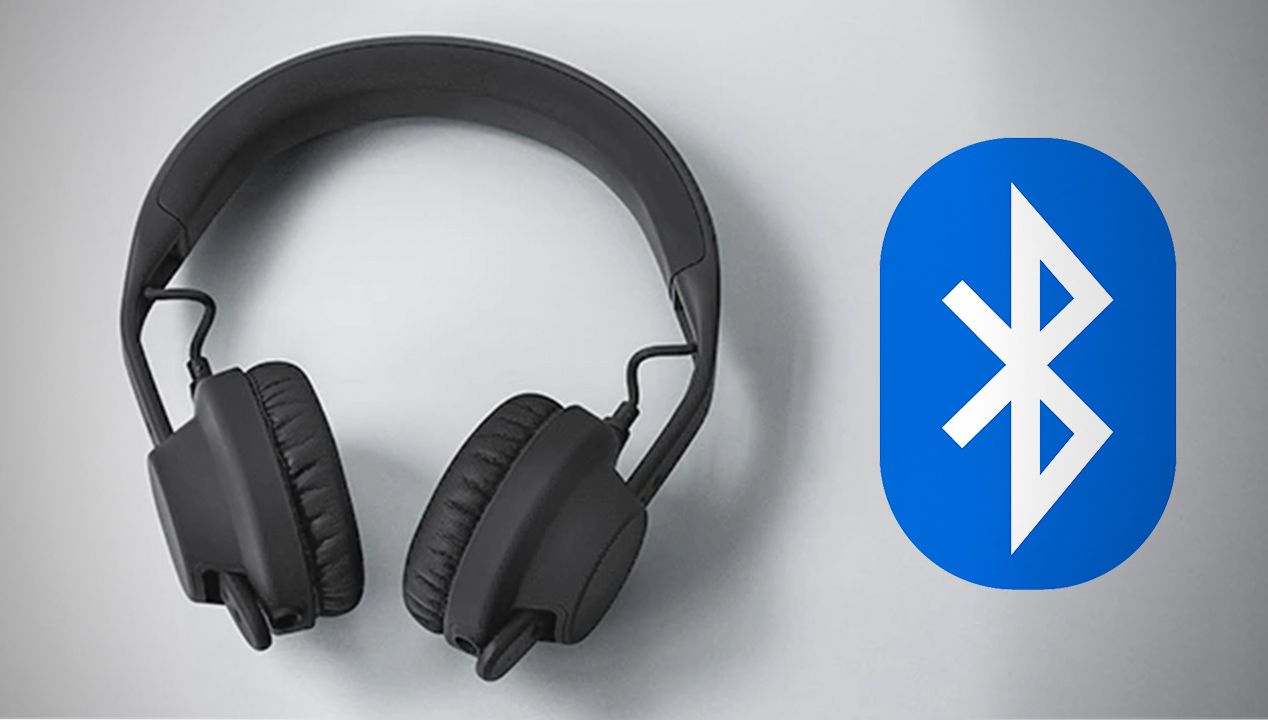DJ headphones are an intensely personal thing. They’re the only weapon in a DJ’s arsenal directly in contact with the body during their work, and as such, concerns of fit, comfort, sound, and style all have a part to play in choosing them. One design has risen above the fray, as unarguably the most consistently popular single model in the DJ world – the Sennheiser HD 25. More recently four other models of headphones with a very similar look and feel have come onto the market, most notably the brand new Pioneer HDJ-C70. This begs the question: what is the best HD-25-style pro DJ headphone?
Born around the same time as the Second Summer of Love in 1988, the HD 25 design has remained largely unchanged in over 25 years on the market. There have been some refinements, of course, and Sennheiser are now on the HD 25-II model, versus the HD-25-1, but you’d be hard pressed to tell them apart. They released a metal edition for the 25th anniversary, and there’s an Adidas edition too, but fundamentally, an HD 25 is an HD 25 is an HD 25.
WHY ARE HD-25’s SUCH A POPULAR DJ HEADPHONE?
Firstly, durability. The all-plastic construction means they’re very lightweight, and can be worn comfortably for a long time, but is also pretty much indestructible in normal use. My first pair are now over a decade old, and aside from a few cable and pad replacements, are still going strong. They don’t last forever, of course, and the bits inside the slider mechanism along with other elements do tend to wear over time.
That brings us to the second reason they are so revered. Every single part on the HD 25 is user replaceable; and easily, too. You can have them completely stripped down to component parts in about 2 minutes, and reassembled in not much longer. And as they’ve been around for so long, and are so popular in other fields like video production too, spares are readily available in most parts of the world.
The final reason they’re so enduringly poplar, in so many industries, is the sound. The on-ear design offers superb levels of isolation from outside noise, and the sound is remarkably flat, with no particular emphasis on any frequency range. This means that the clarity of the HD 25s is up there with the very best headphones, in the harshest of environments (like DJ booths).
HD 25s aren’t ‘perfect’, of course. No product is. The straight cable is a little thin and spindly, although they also offer a coiled variety today. The shiny ‘pleather’ pads tend to lose their outer coating rather quickly in sweaty conditions, so if you aren’t a fan of the velour type, which have inferior isolation, you’ll be replacing those fairly regularly.
If you are a fan of the HD 25 ‘style’, but fancy trying something a bit different, there are a number of competing headphones from different companies trying to steal the king’s crown.
OUR TESTING METHOD

As headphones are such personal items for DJs, it didn’t seem appropriate to have just one pair of ears involved with the testing here. As such, all the following headphones were used for gigs not only by myself, but by a couple of other DJ colleagues, both of whom have used HD 25s for a long time, so could easily compare with the ‘originals’. Thanks to Jonathan Heskett, and Gentleman Jonny for their help, and also to Steven Slater for contributing his thoughts on the Nocs NS900s.
Nocs NS900
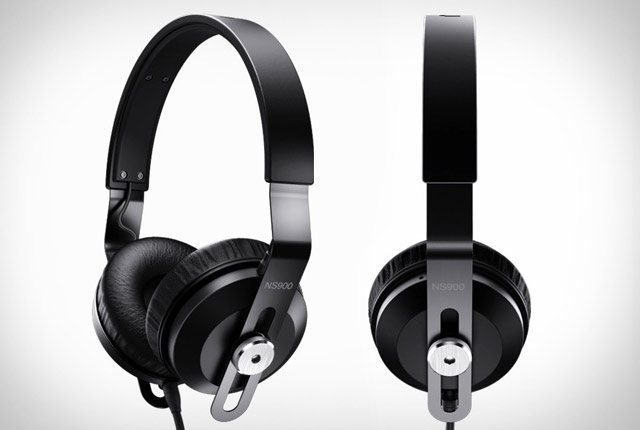
The first thing that springs to mind when seeing the NS900 is the word ‘retro’. The construction is very reminiscent of classic 70’s Hi-Fi headphones, with the stainless steel headband arching right over the outside of the cups. It’s undoubtedly a classy, stylish look, and with my rather large head, I end up looking rather like a cyberman from Doctor Who when wearing them.
The build quality is top-notch all round, with every element oozing quality. The steel headband feels like you could run it over with a truck and it would keep rocking. It does have a kind of ‘springy’ quality which means that they can feel a little tight after a while, but other testers didn’t seem to have that problem. The cups actually pivot on the headband in all directions, which means there’s plenty of movement to ensure the NS900s remain comfortable in all wearing positions.
The cups slide up and down on the headband and are locked in place via big silver allen bolts; there was no allen wrench included, which I would like to have seen, as I’d like to be able to really lock them in one position, and hand tightening didn’t seem quite enough.
All the parts are replaceable, and although they won’t be as readily found in stores around the world as HD 25 spares, that should ensure a long life. I like the ease of replacing the secondary cable which goes from one cup to the other; it’s on little jack connections and is extremely simple to swap out.
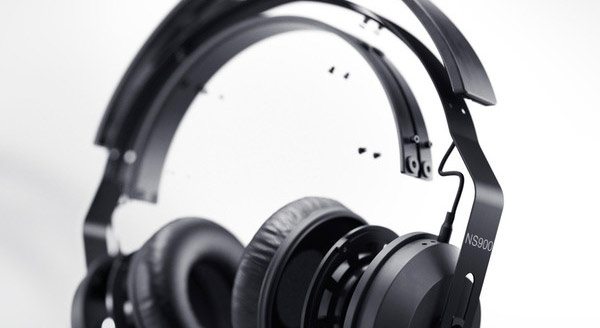
Sound-wise, there is a definite increase in bottom-end thump over the HD 25s. That’s not to take away from the clarity in the higher frequencies, which is crisp, but these are undoubtedly the most bass-heavy headphones in the line-up. That fact garnered mixed reviews from the other testers; one absolutely loved it, one wasn’t a fan. Personally I lean towards a more neutral sound for DJing, but I can see the appeal of a fatter sound for many.
Isolation was a small concern for me with the NS900s; they did not seem to keep external noise out as much as the other headphones. That could be down to something as simple as the size of the pads vs the size of my ears, but it was noticeable in a loud club.
Overall, the NS900s are extremely well engineered headphones, with a touch of retro class which will appeal to a lot of DJs. They wouldn’t be my choice, of this bunch, but yet I can still wholeheartedly recommend them. A lovely product.
AIAIAI TMA-1
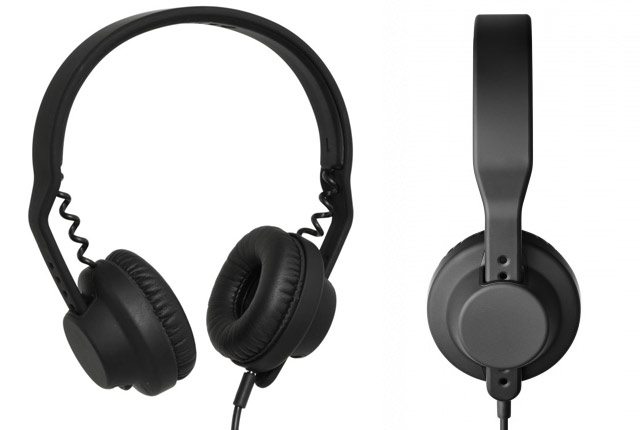
I watch a lot of Boiler Room shows on Youtube (and would suggest anyone interested in dance music do the same, but that’s another story). Amongst the house and techno consignetti seen on there, I’ve noticed two types of headphones appearing more than any others; the HD 25s, and the TMA-1s.
Since their release in 2010, the TMA-1s have made a huge splash in the market. This was my first chance to spend serious time with them, and I now understand why they’ve taken off, although I do have some reservations.
The aesthetic of the TMA-1s is overwhelmingly minimal. Aiaiai have stripped down the headphones to a very pure form with no extraneous design flourishes. The all-plastic construction has a matte, rubberized finish, which feels great in the hands, and things like the large holes which the cups click into for adjustment mean that everything is reassuring to use. One complaint Dj TechTools has noticed is that the finish does tend to wear over time.
A lack of repairability is the price to pay for all that minimalism, however. Aside from the main cable, which is on a locking mini-jack, and the ear pads, there’s very little the end-user can do to repair the TMA-1s. There’s also very little to go wrong with them, of course, so it’s not a massive deal, but you’ll be relying on Aiaiai’s customer service, rather than your own ingenuity, if something goes wrong down the line.
The one elephant in the room with the construction of the TMA-1s is the durability of the headband. As well as internet reports, I’ve seen a couple of snapped TMA-1 headbands in person. That was a while ago now, and the pair on test seem to have a strong headband (I’ve given them as much abuse as possible, with no problem), so those issues may have been a manufacturing problem with certain batches in the past, not a fundamental design flaw.

Comfort-wise, the TMA-1s were my absolute favourite in this test. I could happily wear them for hours on end with no discomfort. The other testers reported similar satisfaction with the comfort though, so it seems Aiaiai have definitely got something right there. Isolation is excellent, with the TMA-1s blocking out noise very well indeed.
What the testers were not so enamoured with, across the board, was the sound quality. Aiaiai include a note in the box advising buyers to run the TMA-1s at low volume levels for 24 hours prior to use, to ‘burn them in’. I found that rather curious, as it begs the question as to why that isn’t done at the factory before shipping, really, if it’s so essential. None of the other headphones on test require such a process, all sounding great out of the box, even if the sound did improve slightly over time.
In my case, I ran them for roughly 11-12 hours before heading out to my first gig with them. They’ve now been used for way beyond that 24 hour period, and I’m afraid the sound still just isn’t up to par with the other headphones on test. It’s hard to describe exactly what the problem is; it’s about the midrange though, almost as if the mids are out of phase with the rest of the frequencies, very wooly. It’s weird, but the other testers reported similar dissatisfaction, so it’s not just me.
Now, these things are used by countless international DJs, so it may be that by not following the instructions to the letter, I’ve somehow failed to burn this pair in correctly. But DJs are not generally known for being the type of people to read instructions at all, and I can’t escape that my overall takeaway of the TMA-1s sound is ‘mids, mids, mids’.
And that’s a real shame, because there’s so much to love about these headphones. They’re beautifully engineered, supremely comfortable, and stylish. If you’re a user of the TMA-1s, please do share your thoughts on the sound in the comments below.
Pioneer HDJ-C70

There’s no escaping it – The C70s clearly owe a massive debt to the design of the HD 25. From a distance, you’d be hard pressed to tell the two apart. That isn’t necessarily a bad thing, of course; nobody is going to fault turntable manufacturers for taking cues from the Technics 1200, for example. If you’re going to design on-ear headphones for DJing, why not draw inspiration from the most successful model on the planet?
Pioneer have made some refinements of their own, which in some respects put the C70s ahead of the HD 25s. The cups are thicker, with the same air chamber design as the HDJ-1500s, and that means the isolation promised to be excellent, and indeed it was; just edging out the HD 25s and the TMA-1s to offer the best isolation on test.
The payoff for that extra thickness in in extra weight. All of these headphones are light, compared to big over-ear designs, but the C70s are a touch heavier than the HD 25s.
The way the cups attach to the headband is basically the same as on the Sennheisers, and the ear pads are roughly the same size, so comfort is otherwise pretty equivalent. The headband has a rubber pad, rather than foam, and of course it’s a single headband rather than split, but they’re still very comfy to use, and I’ve rarely seen any DJ take advantage of the split headband on the HD 25s.
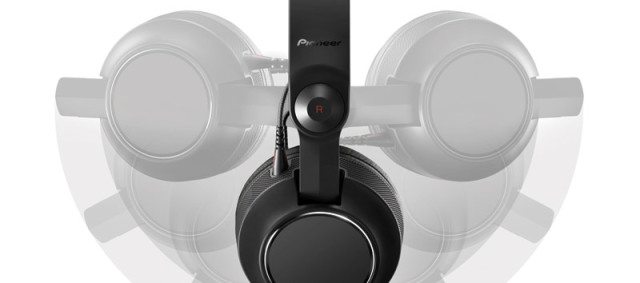
Repairability is another aspect of the HD 25s which has made it to the C70s. The cable is in all-in-one job, splitting to go across the headband, but the exit hole is on the bottom of the left cup, rather than on top, which should make the replacement process a bit less fiddly. Pioneer promise that all the parts will be available as spares, which is great; the only question will be how readily found those parts will be found.
Whereas the other headphones on test come with a coiled cable for DJing, the Pioneers come with two ‘DJ’ cables; a straight one, and a coiled one. They’ve got a ribbed outer finish, which helps prevent tangles, and feel plenty durable. One possible down-side is the straight cable jack. Every other model here (including the HD 25) includes a right-angle jack , which is often preferred in many dj setups.
Coming back to positives; sound quality is excellent on the C70s, with them being the only headphones on test to match the neutral, flat sound of the HD 25s. Crisp, clear, and balanced, no tester had anything bad to say about the sound of the C70s at all.
And that was really the theme of all feedback on the C70s – nothing bad to say about them. Aside from the jack thing, which is a personal bugbear of mine, anyone who gets on well with the HD 25s should get on equally well with the Pioneers. Which is kind of the point of their existence, I guess… They’re well engineered, with great sound, and very comfortable. Absolutely recommended.
SO WHAT DJ HEADPHONE WINS THE PRIZE?
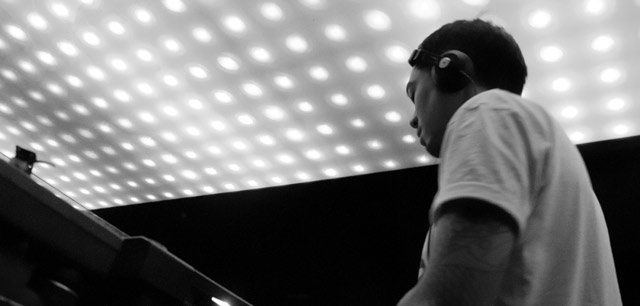
What I haven’t talked about above is pricing. Going off Amazon pricing where possible, the TMA-1s are currently the cheapest here at only $170. The Nocs are the most expensive, at $266. I wouldn’t complain about that, really, as they do feel like a really premium product.
The interesting one is the HD 25s vs the C70s. The HD 25s are currently on Amazon at $205, whereas we have the C70s for pre-order in the DJTT store at $199. That’s aggressive pricing from Pioneer, who once led the way in pushing DJ headphone prices higher with their HDJ-2000s.
Whilst that puts the two models at roughly the same buy-in price, the C70s do come with the second, coiled cable in the box. So if you don’t mind alternating cable styles when you kill the first one, that’s quite a big saving in the long-term, as HD 25 cables are not especially cheap.
The C70s are so, so close, and in a number of respects I prefer them over the HD 25s, but what can’t be disputed is the availability of spare parts for the HD 25s and a history of reliability. It’s doubtful there will ever be another headphone which approaches the ubiquity of the Sennheisers, so there will never be another ecosystem like it. But if you want something a little bit different from the ‘standard’, don’t be afraid to step outside the box, because, as we’ve found in this test, there are plenty of quality alternatives to be had.
Do you own any of the models here and have feedback to give? ? Let us know in the comments below.


